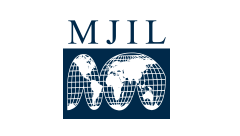Abstract
Over the last two decades, references to intersectionality have become increasingly common in international human rights law. Many human rights bodies now make use of intersectionality in some form, and scholars propose more widespread and in-depth intersectional analysis as a way to better capture how human rights are realized or violated. Against the backdrop of this intersectional turn, this article scrutinizes the dynamics of intersectionality’s travels to international human rights law, asking how power structures influence where and how intersectionality can travel, and how its meaning and use change across contexts.
This article provides a bird’s-eye view of different human rights institutions and identifies a number of factors that condition the use of intersectionality, including the presence of political precommitments and the flexibility to express them, the kind of document or procedure at issue and how it is structured, as well as the institutional culture of any given human rights body and the weight it gives to legitimacy concerns and controversy avoidance. This article also analyzes how scholarship conceptualizes intersectionality in the context of its travels to human rights, arguing that it is presented as an always-already legal notion that impedes attention to the dynamics of depoliticization within human rights. To challenge this depoliticization, this article suggests that it is necessary to loosen our commitment to human rights institutions as forces of social good and instead approach the intersectional turn in human rights from a perspective grounded in political commitments to Black feminism and other emancipatory projects.
Recommended Citation
Jens T. Theilen,
Intersectionality's Travels to International Human Rights Law,
45
Mich. J. Int'l L.
233
(2024).
Available at:
https://repository.law.umich.edu/mjil/vol45/iss2/4

